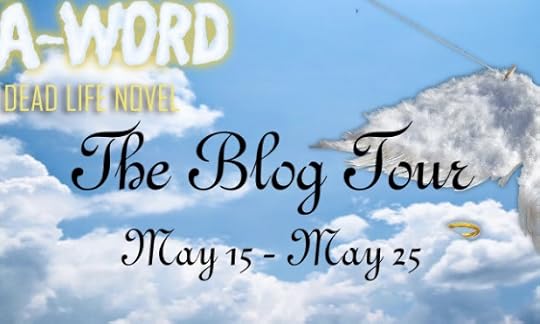E. Kristin Anderson's Blog, page 22
May 24, 2014
Short Story Month: Guest Post from Richard Thomas: Putting Together THE NEW BLACK.
As the Editor-in-Chief at Dark House Press, as well as the editor for THE NEW BLACK, this project has been a real pleasure to put together. It was something that I thought about for a very long time, probably five or ten years, and I’m grateful that I was able to not only find a home for it, but to end up running the press as well. Here are some random thoughts on how I put it together, the process, and the reasoning behind the selections.
NEO-NOIR
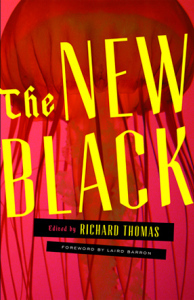
Dark House Press, May 2014.
First, there is the idea of neo-noir, which simply means, “new black.” It’s the kind of writing that I love reading, and the stories I tend to write myself. I can remember going to my first AWP conference in NYC back in 2009 I think and seeing a panel with Stephen Graham Jones and Brian Evenson, and thinking, “Yes, this is what I’m talking about.” They spoke about genre fiction and literary fiction, and how those two types of writing don’t have to be distant cousins, but can in fact be brother and sister. I would see many other panels over the years at AWP in Denver, and Chicago, that touched on these subjects, how stories can be both literary and entertaining, both popular and smart. To me, neo-noir is tragic, it’s the mood and atmosphere, and it’s the evolution of what contemporary fiction has done with the classic models and formulas of crime, horror, fantasy, Southern gothic, and even transgressive—the grotesque, magical realism, too. It’s a wide range of voices, but I know it when I see it, and that’s what makes up this anthology.
LAIRD BARRON, FOREWORD
I was lucky to get the extremely talented Laird Barron to write the foreword. He says it much better than I can, what neo-noir is, and how this genre (or sub-genre) has evolved:
“There’s a subtle distinction between neo-noir and the tradition it has inexorably transformed. Or, perhaps, we’re witnessing an iceberg calving from the great central mass that has accreted over the decades. If you’ve followed the genre, the trend is unmistakable. Otherwise, what’s awaiting you in this anthology might come as a bracing splash of ice water. In either case, you’re in for a treat. Crime is not necessarily the molten core of this contemporary machine. Nor are the characters necessarily of the hardboiled variety. Indeed, the contemporary narratives are far from hidebound. When you get down to brass tacks, neo-noir simply means dark fiction, and even within that niche, there’s a hell of a lot of territory to cover. Here in this new century, ideas and plots of neo-noir have picked the locks and run amok. It’s a fascinating time to be a fan.”
Be sure to read the entire forward, it’s well worth the time, brilliant, really. Laird also just won a Bram Stoker award for best horror collection, so—keep that in mind.
THE FAVORITES
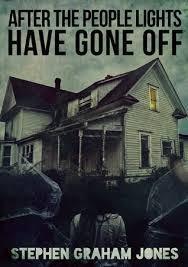
Dark House Press, September 2014.
When this idea first came to me, I knew immediately that there were a few pieces that I had to have. Top of this list was the Stephen Graham Jones story, “Father, Son, Holy Rabbit,” which is such a touching story, and yet, so dark and unnerving. It epitomizes, to me, what neo-noir is all about—unexpected heart in the middle of tragedy, a familiar story that is not what it seems, and a setting that pulls you in and doesn’t let go. In fact we’ll be publishing a collection of his at Dark House Press later this year, AFTER THE PEOPLE LIGHTS HAVE GONE OFF—so good. And right behind it in the TOC is Paul Tremblay’s, “It’s Against the Law to Feed the Ducks.” I might be getting soft in my old age, but once I had kids, I stopped watching Law and Order: SVU, because I couldn’t take the stories about abused and murdered children. With Stephen and Paul’s stories both focusing on family, it wasn’t hard to get me to tear up. Paul takes the traditional post-apocalyptic narrative and really bends it into some else, a quiet horror that is so very powerful. Lindsay Hunter continues the family trend with “That Baby.” I knew I wanted her in here, even if she might not consider herself neo-noir, for the dark, emotional and uncommon voices she brings to light. A mother and her child, the stress and horror of him not being a sweet little angel, and the last line, which will say with me forever: “…I took a turn and he was gone, my heart like a fist to a door and my breasts empty, my nipples like lit matchheads.” And then there is Kyle Minor’s, “The Truth and All Its Ugly,” which has been my favorite of his for years, which kind of ends our early family section. It’s such a unique story, one that floored me the first time I read it, a father and his son, what lengths he’ll go to in order to keep that love alive. It echoes Stephen’s story earlier. I also knew that I wanted something from Brian Evenson, and while reading his collection, WINDEYE, I knew that the title story was what I wanted, “Windeye.” It’s about a brother and sister, and the games we play as children—teasing, daring, and how that might go horribly wrong. Brian’s a brilliant author, and sometimes his work goes over my head, but this story hits that perfect sweet spot, and then twists, and then twists again. “Rust and Bone” by Craig Davidson is another title story I knew I wanted, from his collection of the same name, a story about a fighter, and the brutality and heart of what happens in the ring. And the last story that had been with me for a long time was “Instituto” by Roy Kesey. He was one of the first authors I heard read at AWP NYC and the surreal setting, the poetic voice—it has haunted me forever. These were my immediate choices, the stories I knew I had to have.
DOING RESEARCH
Second, I wanted to go after authors that I loved, but wasn’t sure which story I wanted. Matt Bell was one of those voices, but most of his early work was part of his book, CATACLYSM BABY, and were really part of a larger narrative I couldn’t tear apart. When I ran across his story, “Dredge” in the BEST AMERICAN MYSTERY STORIES anthology, I knew I’d found the story for this anthology. A man, a freezer and a dead woman—sold. When I think of neo-noir, another voice I’ve loved for a long time is Craig Clevenger, with his novels DERMAPHORIA and THE CONTORTIONIST’S HANDBOOK helping to define my idea of what neo-noir could be. I settled on “Act of Contrition” which was in the WARMED AND BOUND anthology (where I also have a story) because it taps into his voice in such a powerful way. Roxane Gay is another author I’ve been reading for years, but her stories are all over the spectrum, and not all of them felt right for this anthology. What I love about her voice is she isn’t afraid to take chances, to write about taboo subjects. Maybe I was just overwhelmed by her body of work, unable to narrow it down. I read so many journals, all of her work amazing, but settled on “How” because of the way it ended, the way it made me feel. I also wanted to get something from Vanessa Veselka, especially since I couldn’t get a story for THE LINEUP: 25 Provocative Women Writers (Black Lawrence Press) also out later this year. Her stories were in progress, or just coming out in Tin House and a few other places. It was too soon. I snagged “Christopher Hitchens” for the imagery, the power of the story, and emotion. I also knew that I wanted something from Antonia Crane, her body of work so varied, but always captivating. When I ran across her “Sunshine for Adrienne” in THE HEROIN CHRONICLES, I was sold.
OPPORTUNITY
I was at a reading for Curbside Splendor (our parent company) and had the chance to meet Joe Meno for the first time. I’d been a fan of his for years, even publishing a story in a little rag called Colored Chalk. We got to talking about the anthology, as I was just about done setting the TOC. The more we talked, the more I realized that I wanted something from him. I remembered the first time I’d heard him read at an AWP conference, and how powerful it had been. We kicked a few stories back and forth, and I settled on “Children Are the Only Ones that Blush” because of the way it ends, the pet, the balloons, the boy and the girl, the truth that is still a lie.
COMING UP TOGETHER, OLD FRIENDS
There were a handful of authors that wrote neo-noir, good friends of mine, and as much as I kept telling myself to not publish my good friends, that it might feel too incestuous, I knew in my heart that it didn’t matter how we knew each other, that we’d been close for years, coming up together, what mattered was that they were fantastic authors, I love their writing, and they fit this anthology—would help to define this anthology. Nik Korpon is the first author, and his story, “His Footsteps Are Made of Soot,” is probably my favorite of his to date. So atmospheric and strange and original—love it. Craig Wallwork wrote one of the creepiest stories in this collection, “Dollhouse” and I’ve been publishing his work for years, championing his voice. So surreal, and the impact, BAM, the ending just knocks you for a loop. And then there is Rebecca Jones-Howe, who I saw evolve at various workshops, including her epic win at the LitReactor.com WAR competition, beating out a field of 64 entrants (including myself) to take the crown. I knew then that she was going to be special (we’ll in fact be publishing a collection of her stories in 2015, called VILE MEN). “Blue Hawaii” was my favorite story of hers from that contest. She isn’t afraid to write dark, sexy, and vulnerable stories. I love her voice.
NEGOTIATIONS
What a lot of people never see, behind the scenes, are all of the failures. They don’t know about the e-mails to “big” authors and their agents, the silence that follows, the lack of interest from household names, and award-winning voices. Those are crushing, but they’re also to be expected. Nobody knows about the authors who are excited to be a part of the project, but then the presses get involved, agents and publishers, and fees of $500 or $1,200 or $2,000 are kicked around, ultimately forcing me to pass, being the small press that I am. We’d go bankrupt before we even published. I went after a really well known story of Benjamin Percy, entitled, “Refresh, Refresh” which was the title story in his second collection. I’d fallen into Ben’s world with this book, and then THE WILDLING, and later, RED MOON. He was another voice that I knew fit this genre perfectly. But unfortunately I couldn’t get to that story, any of the stories in that collection, in fact. I was devastated. But then Ben, the brilliant man that he is, suggested “Dial Tone,” saying it might be more “noir” anyway, and it had only been in The Missouri Review, not in a collection. It was perfect. And in the end, I think this was probably the better choice anyway, it fit the anthology like a glove, and luckily enough for me, it hadn’t already been read a million times by fans of his work. I might still be able to show this to some readers for the first time.
NEW TO ME
Along the way, as I tried to fill out the last few slots for this anthology, as I poured over anthologies and short story collections and websites, I was lucky enough to discover a few voices. Like a needle in a haystack, these stories, and authors—they were exactly what I was looking for. The first was Richard Lange. As I was signing authors and stories, ANGEL BABY landed on my doorstep. It’s an amazing book. It prompted me to go pick up his collection as well, DEAD BOYS. In the end, we went with “Fuzzyland,” and its creeping fire, jaunt across the border to Mexico, its voice a gut punch, an emotional journey and ending. I got lucky with Micaela Morrissette, too. I ran across her story, “The Familiars” in the epic tome, THE WEIRD: A Compendium of Dark and Strange Stories, edited by the Jeff and Ann VanderMeer, who do such amazing work. I’d never heard of Micaela before, but her story was perfect—dark, strange, emotional, touching, sad—it hit all of the right notes, and built on the classic monster story of the imaginary friend, the thing under the bed, and took it in entirely new directions, with a lyrical voice, to boot.
LAST MINUTE
Unfortunately I had to pull one story at the last minute, and scrambled to find the last author. I looked at crime and horror, fantasy and Southern gothic, and while reading the Barrelhouse crime issue, I saw the name Tara Laskowski, which rang a bell. I’d probably read five of her stories over the time I’d been researching this book. I looked at “The Etiquette of Homicide” and felt it was a voice that needed to be in here, the format very original, a recipe for disaster (literally), a guidebook on how to kill. I thought it was smart, funny, and dangerous. I was lucky that she said yes.
IN CONCLUSION
What makes this anthology so special TO ME is that these are all home runs, these are all stories that have made me laugh and cry, flinch and moan, sweat and twitch—the horror, the tension, the emotion, the tragedy, the sympathy and empathy—they are neo-noir at its best. I am lucky that I was able to get these authors to sign up for a new press with a new editor, to take this chance with me, to trust me with their words. It’s not often that we can pull together a book of our favorite stories, our favorite authors, and put it out into the world with such passion, and confidence, and gratitude. This is that book. I hope you’ll pick it up and take the ride with me. Buckle up and steady your nerves, but don’t look away—who knows what you might see, what enlightenment might be waiting for you between the lines.
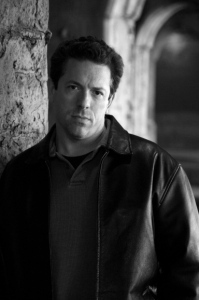
Richard Thomas.
Richard Thomas is the author of five books – DISINTIGRATION, TRANSUBSTANTIATE, HERNIATED ROOTS, STARING INTO THE ABYSS and FOUR CORNERS. His over 100 stories in print include Cemetery Dance, PANK, Gargoyle, Weird Fiction Review, Midwestern Gothic, Arcadia, Pear Noir, Chiral Mad 2, and Shivers VI. He is also the editor of three anthologies out in 2014: THE NEW BLACK (Dark House Press), THE LINEUP: 25 Provocative Women Writers (Black Lawrence Press) and BURNT TONGUES (Medallion Press) with Chuck Palahniuk. In his spare time he writes for The Nervous Breakdown, LitReactor, and is Editor-in-Chief at Dark House Press. For more information visit www.whatdoesnotkillme.com or contact Paula Munier at Talcott Notch.





May 23, 2014
Short Story Month: Guest Post from Shelli Cornelison: On Coming Out Of Retirement
I retired from writing short stories at a young age. I think I was eight. I’d written and illustrated a short story about a girl and a boy fighting over a yo-yo. The details are fuzzy but I know it had a happy ending, i.e. the girl got the yo-yo. I was very proud of myself until I overhead my mom sharing the story with her best friend at our kitchen table. They were laughing and I heard the word cute. To my eight-year-old (and apparently already writerly neurotic) brain, they were laughing AT me. And I was a SERIOUS writer. That story was not cute!
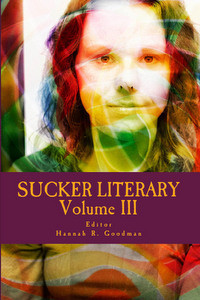
Sucker Literary, 2014.
My public had misunderstood me so I did the only logical thing: I waited for my mom’s friend to leave and, as they were saying their goodbyes on the driveway, I burned the story in the bathroom sink. Yes, my mother cried, but an artist can only do her work to please others for so long. I took up singing instead—no lessons, just singing. That dream lasted until sixth grade choir. The choir teacher wanted me to learn things like scales and how to read music. That wasn’t art. That was work. And I was an artist, a free spirit, so when the time came to choose classes for seventh grade, I gave up singing. There may have been a pattern forming at this point but I’ll spare you the many other starts and stops.
Fast forward some crazy number of years and I found myself writing again. I only wanted to write picture books—until I also wanted to write essays and articles, and then novels and, ultimately, short stories, too. I don’t remember why I wrote that first short story as an adult, but I do believe all writing informs other writing. When I started writing novel-length manuscripts, my picture books got shorter, and I think writing short stories has helped the pacing in my novel manuscripts.
I didn’t think writing short stories would stick, but my third published short just came out in Volume III of Sucker Literary and I have another out on submission, so I guess as long as no one calls one of my short stories cute in a rejection letter, I may keep writing them (and my bathroom sink can remain uncharred). One of my short stories, “Refraction,” is featured at YARN and thank goodness they never said cute. They’re an online only publication and burning my laptop would be hard to explain to my husband, and the insurance company probably wouldn’t understand at all.
As much as I love stories of all forms, it can be hard to find the time to read. Even as a writer who must read, it’s just hard to manage sometimes. Short stories feel like a cheat code in the game of reading. I read as many young adult novels as I can but, in between, when I’m busy and stressed, I pull an anthology from my shelves and read a short story. Short stories save me from consuming all the chocolate to assuage my guilty conscience for not reading. That way I can eat the chocolate to celebrate myself for reading instead. It’s not about avoiding the chocolate; it’s about eating it joyfully. It tastes better that way.
Short stories can lead to different places for different writers. I know many writers have gone on to write a novel based on one of their short stories. So far, I’ve not felt the pull to expand one of mine. Once a short story ends, it’s over. I’ve told that story and I move on, but I wouldn’t avoid expanding a short story if the inspiration struck.
I enjoy writing novels but it’s a daunting process sometimes. While writing the first draft of my latest novel, it felt as though someone kept moving the finish line. I’d be so sure I was nearing the end, and then I’d realize something else needed to be addressed and I’d have to adjust my personal deadline again. I get a great adrenaline boost after typing The End. Finishing a short story can take a while, but the reward does come quicker than with a novel. Basically, they’re a shortcut to the celebratory wine and dessert. Now you know my real motivations.
Some of the things I gave up in my youth were actually for the best: illustrating, singing, orchestrating handprint slapping contests on the back of the boy down the street (who willingly agreed to be the canvas, for the record!), but I’m grateful every day that I somehow found my way back to writing, and to short stories.
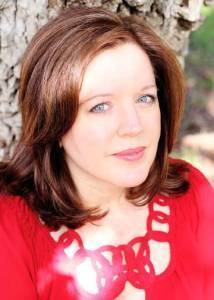
Shelli Cornelison.
Shelli Cornelison lives near Austin, Texas with her husband, two kids, and enough pets to complicate vacation planning. She’s glad there was no Facebook or Caller ID when she was a teen, but really resents that she had to do homework without Google or Wikipedia. Also, a GPS would’ve come in handy more than once back then. She’s still directionally challenged but manages to find her way to the keyboard. Her young adult short stories have appeared in Sucker Literary and YARN. She blogs at www.shellicornelison.com and tweets as @Shelltex.





May 22, 2014
Short Story Month: Guest Post from Katia D. Ulysse: The Gift of Storytelling
Writer and Author are garments that I wear only for certain occasions. When the world around me begins to congeal, Writer and Author are like designer overcoats that keep my veins from clogging and a hospital worker from tying a small white tag around my big toe. Sometimes, Writer and Author serve as monolithic pillars behind which I hide for a time. They are twin posts in a neighbor’s wooden fence; and since I am a familiar passerby, the neighbor allows me to lean on the Writer and Author post also for a time. People like me are expected to leave. That caravan of traveling storytellers cannot leave without us. We carry too many stories with us. They are not written on pages. There is no paper in my basket, only a hurricane imagery mixed with memories—some real.
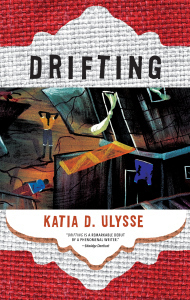
Akashic Books, July 2014.
The line of storytellers whose blood runs in my veins never wrote a word on a page, including their own names. Pens were the weapons of thieves who wore suits stolen from poor land-rich peasants. Paper had its purpose: birth and death certificates, land deeds, kindling for three-rock fires. Whatever paper that was left over was put away for marriage certificates.
Even if pens and paper had been readily available, the storytellers whose style I inherited would have had no use for them. The night was all they needed. They required a rocking chair and maybe a hand-held fan. Telling stories was exhausting work, like moving heirloom furniture from one continent to the next—on foot.
Instead of pen, my great-grandmother required the moon. The mountains in the distance served as the board on which she projected her memory. With one word, shadows came to life. The bald-headed lamps that flickered in the mountains were like eyes. A single story could take seven nights and seven hours to be told. How much paper would such a story require?
Like my great-grandmother and her great-grandmother before her, I sit under a black-black sky to tell stories. There are children gathered about my feet, listening, waiting for the sharp turns, shaking with anticipation. It’s me now in my great-grandmother’s wooden rocker. I sit like market women with legs wrapped around their merchandise, keeping the wind from stealing their wares. The wind can do that, you know. In Haiti, my birth country, especially. The wind can come with such force and voraciousness that it scatters your good paper and congeal the ink in your pen, leaving Writer and Author only the memory of a craft.
A writer without pen and paper is like an electrician in a country without electricity; a dressmaker without a needle. My great-grandmother had no need for those devices. She had memory, imagination, a voice, her eyes, her hands, and all the silence necessary to make a story breathe.
It was always within that silence that her characters crept out of the dark to sit on the porch next to me. I didn’t have to look to know they were there—beasts, long-lost children, women who shed their skin at night, men whose legs grew so long that they dragged as they rode their mules from the city to the mountainside.
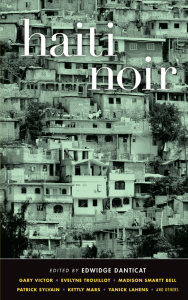
Akashic Books, December 2010.
I lived for the nights with my great-grandmother. I lived for those hours when I would be so frightened by my grandmother’s stories that I would want to hide. I would want her to tell me, just once, that the stories were just that. The characters were not real. She never did. She never said: “Oh, don’t worry. These stories are not real.” Thinning the line between present time and hundreds of years before would have diminished the story’s power. Telling would have been an insult to the memory of her great-grandmother.
Now I know that my great-grandmother wanted to give me the gift of storytelling. How she must have enjoyed being frozen with emotions. Her great-grandmother came from a time and place when reality and dream were one; when sea and land were like two lanes on one highway. This was a time when people sank to the ocean floor and returned days later without an explanation. My great-grandmother did not need an explanation. She accepted life’s mysteries. People sank to the bottom of the ocean and came back the next day all the time, didn’t they?
Every night, my great-grandmother gave her stories to me. She trusted me with them; she knew I would fill my basket with them some day, and quite possibly, take them to the market. Even now that I am thousands of miles away from my great-grandmother’s porch, I give my daughter those stories, not in written form—I could not write those stories down. Paper cannot hold them. They are not made of words but of emotions and gestures and darkness and the moon and whatever exists behind the sky. I give them to my daughter as my great-grandmother’s great-grandmother must have heard them from her own family.
I learned how to tell stories from my great-grandmother, Madan Deo. She had an acute sense of occasion. Night time, as far as she was concern, was a time for remembering dismembered faces and putting together scattered places. Never once did I hear Madan Deo say: It’s late. It’s time for you to go to bed. You need to sleep. Night time was when she dreamed while awake. I am grateful for having dreamed while awake alongside her.
Writing stories, as I do today, is an odd exercise. For one reason, I have to write in a language that remains foreign to me. I could learn every entry in the Oxford English Dictionary and still not have enough words to tell stories the way my great-grandmother told them. There is hidden power in the oral tradition. No one would have accused my great-grandmother of being a writer or author. The woman was a born storyteller. Every time I feel the impostor syndrome settling within me like ink in my pen, I remind myself that as a descendant from a long line of storytellers, my job is only to transcribe what I hear from that far, faraway place underneath my skin.
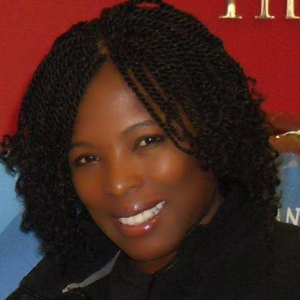
Katia D. Ulysse.
Katia D. Ulysse was born in Haiti, and moved to the United States as a teen. Her writings have been published in numerous literary journals, including the Caribbean Writer, Meridians, Calabash, Peregrine, and Smartish Pace, among others. Her work has also appeared in THE BUTTERFLY’S WAY and HAITI NOIR. Her first children’s book, FABIOLA CAN COUNT, was published in 2013. Ulysse lives in Maryland with her husband and daughter. When she’s not reading, writing fiction, gardening, or teaching, she blogs onVoicesfromHaiti.com.





May 21, 2014
Short Story Month: Guest Post from Sherry Shahan: From Short Story to Novel, in 60,000 Words
Many years ago I came up with a quirky idea for a short story featuring teens in an Eating Disorders Unit of a metropolitan hospital. Sort of “One Flew Over the Cuckoo’s Nest” meets “Love Story,” only told in 5 pages.
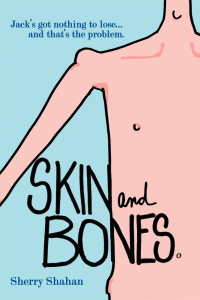
Albert Whitman Teen, March 2014.
Then titled “Iris and Jim,” it quickly sold to a major literary journal, ZZYZVA. Later, a London publisher included “Iris and Jim” in their YA anthology, and subsequently in their Best of collection. In total “Iris and Jim” has been published eight times worldwide. There was just something about this wacky story . . ..
My agent encouraged me to expand “Iris and Jim” (now titled SKIN AND BONES) into a novel. Sure, easy for her to say. I spent months weighing the pros and cons of such a daunting undertaking.
Pros:
The short story would serve as an outline since the basic story arc was in place.
Each character already had a distinctive voice.
The hospital setting was firmly fixed in my mind.
The story’s tone would lend itself to a longer format, particularly when developing snarky dialogue.
The subject matter had proven itself to be of interest to readers.
Proven ground is attractive to editors and publishers, as long as the topic is approached in a fresh way.
Cons:
The story would require an additional 60,000 words.
I’d have to create new characters.
Every character would require a convincing backstory.
I’d have to develop compelling subplots.
Every scene would need emotional subtext.
One voice in my head said, “Can you handle spending a year with teens suffering from potentially life-threatening disorder?” Another voice, the louder, stupider one said, “Why not give it a try?”
During the first draft I encountered a number of unexpected obstacles. For instance, how could I keep up the idiosyncratic tone without the narrator sounding flippant? Eating disorders (anorexia, bulimia, compulsive over-eating, etc.) are serious, and in too many instances can result in death. It took several drafts before the tone felt balanced.
More than one anorexic in my story figures out how to beat the health care system. Research led me to memoirs where I learned that they’re experts at manipulating parents and each other, as well their environment. Yet I worried about Skin and Bones becoming a how-to manual for those still in the throes of the disease.
On the other hand, I knew I had to include information about the potentially grave consequences associated with the illness. But I didn’t want to sound didactic. Sometimes I sprinkled facts into farcical scenes. Other times statistics emerged in dialogue between ranting patients. Either way, disseminating information felt more organic when slipped in sideways, and never straight on.
httpvs://www.youtube.com/watch?v=QIPVkS-ie2A
More than one person in my critique group questioned the validity of males with eating disorders—even though experts estimate that 10 million adolescent males suffer from the illness. Research helped me develop a realistic backstory to explain why my protagonist had slipped into this dangerous abyss.
Each revision (some 10 drafts in all) brought new challenges, some of which required me to step away from the hospital and my characters. I sometimes spent days away from my computer and returned to my work with a fresher perspective.
Shortly after Wendy McClure at Whitman acquired the manuscript I received a list of astute questions, including:
What’s inside Jack (Bones) that predisposes him to anorexia? (This needs to be a recurring motif throughout the book, whatever it is.)
Can you emphasize Bones’ terror in terms of what he does (wearing rubber gloves to avoid absorbing calories when he eats) in this scene, rather than what he thinks?
David (Lard) is a compulsive overeater. Semantics aside, what is it about his disorder that requires him to be hospitalized? Kids aren’t locked up in eating disorder units just to lose weight.
More general comments:
Be careful of re-treading certain elements, especially parts where
Bones obsesses over calories.
Is there a better way to pace the plot points?
Re: Parody. Wouldn’t these scenes be funnier—and less cartoony—if
the details came out in dialogue between the characters?
Other notes included minor issues with pacing, structure, and chronology, as well as tweaking chapter ends to increase page-turning tension. But, then, I’d expect these types of editorial notes even if the novel hadn’t grown out of a short story.
I really had to think about the pulse of a novel and how it differs from a short story. The pacing is more generous. The theme more layered. I had the freedom of spending more time with my characters. This meant readers will know more about where they’re coming from; the intricacies of their motivation, goals, and actions. What might have originally been an internal thought often became a powerful piece of dialogue.

Sherry Shahan.
Sherry Shahan is known for her adventure-slash-survival novels ICE ISLAND, FROZEN STIFF (both Random House), and DEATH MOUNTAIN (Peachtree). All are metaphors for teens surviving life’s emotional hardships. She holds an MFA in Writing for Children and Young Adults from Vermont College of Fine Arts and lives in a laid-back beach town on California’s Central Coast. Visit www.SherryShahan.com





May 19, 2014
Short Story Month: Guest Post from Denise Lewis Patrick: My Never-ending Stories
I have about a dozen spiral notebooks dating back to when I was fourteen years old. Their covers are elaborately decorated with drawings, doodles and graffiti-type pen scrawls. Inside are some very earnest poems, the titles of favorite songs from back-in-the-day (Aretha Franklin and the Jackson Five were repeats), and a few notes of encouragement from close friends. But the rest of the pages? They’re filled with unfinished short stories.
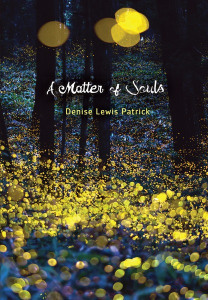
Carolrhoda LAB, April 2014.
I re-read my old poems all the time. So, I thought recently: if I can learn from my poetry, if I can see the beginnings of my writing voice and style in poems, maybe looking more closely at my early short story attempts would be illuminating. I pulled Volume One out of storage and opened it. Questions popped into my head before I could read a line: Why so many stunted efforts? Why could I finish poems, but not stories? Is there anything of my writing self today that’s recognizable?
Honestly, the experience of actually reading the seventeen starts and fragments was as fascinating as looking through a shoebox of old black and white photos.
First, I was clearly not bound by the adage to “write what you know.” Although most of my physical settings were vague—probably because I hadn’t really traveled much—the locales of the scenes did somehow feel distinctly different. Two stories were clearly set in huge mansions, complete with servants. Others gave the impression of urban or city backgrounds, nothing like my own small town, and one place could have been West Texas or New Mexico or Oklahoma. There was unexpected variety in other areas, too.
I was raised among schoolteachers, preachers, manual laborers and maids, yet the occupations of my characters ranged from firefighter to news reporter, fine artist to shop owner to slave and overseer. That last one did have a connection to the complex history of the Southern United States. But then, as now, I was not content to restrain my storytelling to my own personal environment. These days I might just as well set a story in New York as on another planet.
Only one of the early stories had a teenage main character. The rest were an assortment of young adults and parents involved in tangled relationships. Curiously, a recurring theme in my current fiction is the relationship between parents and their children of all ages. What became obvious as I turned the pages of my first notebook was that I love developing characters and having them play off of each other in real ways.
Quite a few stories turned on the intricacies of romantic relationships. I’d had crushes, of course, but had not experienced anything like love, or even young love back then. What I’d observed of adult relationships was limited, and my parents’ easy interactions and solid marriage didn’t give me any view of what troubles males and females run into when they try to partner up. So I guess I had a severe lack of confidence in my ability to actually portray that in a realistic way. None of those stories ever ended.
What comes through in my young writing is my attention to details and description. What I lacked in creating larger settings I made up for in minutiae. I was using gestures and description long before I learned how important they are to story.
“Sybil’s eyes pierced Georgia’s. She moved her hand over the pearls on her throat.”
“Anthony kicked the dust, watching a little cloud form and float away.”
“She ran her hand through her short brown hair. David was on that bus. She was sure. Positive.”
Nice lines for an amateur, I think. Almost, but not quite, the type of line I might write today. So the young me was clearly feeling out the strategies and tools that I later used to build story with: Characters. Gestures. Detail. What I didn’t get a grip on was faith in my own growing abilities.
For many years after college, I did not write stories. Maybe I was afraid—especially of all the hungry, unfulfilled notebooks that I left at my parents’ home when I moved away. I kept writing poetry. Through writing poetry I began to understand the power of being more concise, of honing meaning by finding the best, most right words.
And one day, nearly 30 years after I began it, I found one of those old stories torn from a later notebook. This one was nearly complete, a story about plain parents who sacrifice to give their only daughter a fancy education; about a father who loves his daughter, but can’t bring himself to tell her. About a daughter, who feels she’s failed her parents, but can’t find the voice to tell them. By the time I read that handwritten draft, I’d become a parent myself.
I had added the dimension of time lived to gesture and character and dialogue in my writing repertoire. I had the courage not to be embarrassed by my limitations. I had a laptop. By then I’d learned that complete is not the same as end; that sometimes real life has no closure. I finished the story, and I’ve gone on to write many new ones.

Denise Lewis Patrick.
Denise Lewis Patrick, a Louisiana native transplanted to New Jersey, has written everything from poetry to puzzles to exhibit text for Cincinnati’s Underground Railroad Museum. She’s had more than two-dozen books published for children, from picture books to middle grade historical novels THE ADVENTURES OF MIDNIGHT SON and THE LONGEST RIDE She’s also author of three books for American Girl’s New Orleans historical character, Cécile Rey. She’s a mom of four, and an adjunct writing professor. Her most current book is A MATTER OF SOULS, a collection of young adult short stories published by Carolrhoda Lab in April.





May 16, 2014
Blog Tour Guest Post from Joy Preble: Crafting the Mystery
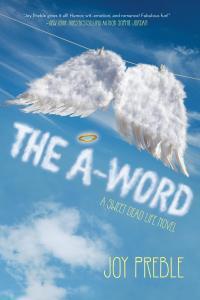
Soho Press, May 2014.
Writing THE SWEET DEAD LIFE series, which includes THE A-WORD, definitely required understanding how to craft a mystery. Some readers assumed in book one that the main mystery was Casey becoming an angel. And although that was definitely part of the suspense, the real unknown is what has been happening to the Samuels family and why and how it connects to something larger and more nefarious that will inform the global conspiracy in both books. Jenna, it turns out, might have a very important role in things to come. So important that there are powers that might want her out of the picture, if only by disrupting her life. That larger series arc combines with numerous more personal mysteries: Where did Jenna’s father go in book one? How did Amber Velasco – Casey’s angel boss—actually die? Who’s behind the weaponized memory drugs? What motivates new, head honcho angel Bo Shivers? And lots more.
Thus my biggest job in these two books was to make sure that the character and individual novel arcs meshed with the series arc and that everything paced itself to keep the reader’s attention. Plus in THE A-WORD, we have a love story: the budding relationship between Jenna and Ryan Sloboda, juxtaposed against a number of failed or failing love relationships. Casey’s doomed love with cheerleader Lanie Phelps. Lanie’s rebound love with football player Donnie Sneed. Amber Velasco’s former relationship with Terry McClain. Bo Shivers’ sad romantic past. The failing marriage of Jenna and Casey’s parents.
I loved working with so many threads! And the trick, I think, is to outline. ‘Pantsers’ beware: if you don’t know where you’re headed in the end of a mystery, chances are you will write yourself into a corner before you get there. You want to plant clues, but they can’t be too obvious. You want to misdirect on occasion –a bigger issue in my forthcoming FINDING PARIS (Balzer and Bray, 2015). I don’t worry so much about readers figuring out the bad guy as much as I do that his/her motivations and secrets are set up and achieve a satisfying payoff. And I did feel that first person past tense was the best POV for these books because the narrative could be immediate but with that extra bit of distance that allows Jenna to ponder a bit in her signature journal entries.
I hope everyone enjoys THE A-WORD as much as I enjoyed writing it!
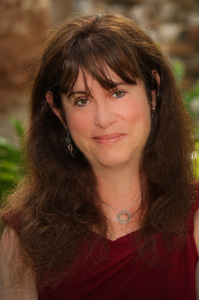
Joy Preble. Photo by Toppel Photography.
Joy Preble is the author of the popular and highly acclaimed DREAMING ANASTASIA series as well as THE SWEET DEAD LIFE, the prequel to THE A-WORD. A former English teacher, Joy grew up in Chicago and is a graduate of Northwestern University. She is now a full-time writer and lives with her family in Texas, where she has learned to say “y’all” without any hint of irony.





May 14, 2014
Review: THE ART OF SECRETS by James Klise
I’ve never read a book quite like THE ART OF SECRETS by James Klise. Told in multiple perspectives, almost entirely in the form of discourse and conversation (with the occasional journal entry from protagonist, Saba Kahn), THE ART OF SECRETS is part mystery, part drama, and so very fun to read.
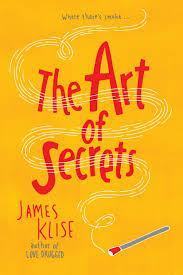
Algonquin Young Readers, April 2014.
In the wake of a fire that destroyed her family’s home and all of their belongings, Saba Kahn has gone from almost invisible at her Chicago prep school (where she is a scholarship student) to borderline notorious, with a basketball star as a sort-of boyfriend and school do-gooders organizing a charity auction to help her family.
She’s got a lot to deal with, though. Saba’s family is getting too much attention at school, and from the police. Authorities can’t seem to decide if her family are victims or culprits, which means the rumors are flying at school. And then there’s the whole art thing — an item in the auction, which new girl cum auction organizer and her brother found in an alley, has turned out to be some seriously valuable paintings by a famed but reclusive Chicago outsider artist. When the art goes missing, Saba has another mystery plaguing her and her family. And more rumors to try and ignore.
With points of view ranging from Saba’s father, to Saba’s boyfriend, to the school principal, to her classmates running the auction, THE ART OF SECRETS is a unique mystery, as well-designed as it is well-written. Klise‘s characters are wry and witty, and even with so many narrators, the voices are compelling and distinct. I’m still excited about the book. I can’t stop being excited about it. And while it’s a rare book that I think is a contender for the Printz, the National Book Award, and the Edgar, I fully expect to see these and other accolades for James Klise in the near future.





May 13, 2014
Review: TEASE by Amanda Maciel
There are very few likeable characters in this book. Which isn’t all that surprising. TEASE by Amanda Maciel is from the point of view of a bully — a girl who doesn’t realize and can’t come to admit that she not only is a bully, but that she contributed to the harassment that lead to the suicide of a classmate. Somehow, despite the lack of sympathetic characters, though, TEASE is a compelling read. Like, a can’t-put-this-book-down read. The writing is that good.
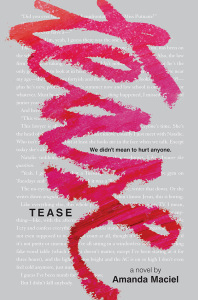
Balzer + Bray, April 2014.
Skipping back and forth in time between the events leading to the suicide of Emma Putnam and the protagonist, Sara’s, trial following Emma’s death, TEASE is the story of two mean girls who push “teasing” to a whole new level after Sara suspects that Emma is out to steal her hot senior boyfriend Dylan. Encouraged by her bestie, Brielle, Sara gets a serious hate-on for Emma, accusing her of everything from stealing boyfriends to spreading STDs, sending mean gifts, and turning friends and would-be boyfriends against her.
The thing is, Sara might be a mean girl, but underneath her shell of social superiority, she’s insecure, leaning on her friendship with popular Brielle and cool Dylan. She is terrified of losing either of them, and taking down Emma becomes a mission for her and a game for her bully of a BFF. Sara constantly claims at her therapy sessions that Emma was no angel– and this is true. But she also doesn’t note that Brielle isn’t exactly a nice girl and Dylan is the typical crappy boyfriend from every teen movie ever.
Sara is going to have to find her voice, and her own truth. Which is hard to do when every news outlet in America is focusing on the suicide of sweet Emma Putnam and the group of mean teens who may as well have murdered her. Perhaps, with the help of the supposed “bomb threat guy” in her summer school classes — sexy and mysterious Carmichael — she can figure a few things out. And perhaps even find some forgiveness. But it’s hard to shed her old self, especially when everyone around her has already decided who she is.
An important book, TEASE is timely, terrifying, and all too true. I hope readers will find their own truths and their own voices in this book. And I hope they find it as scarily compelling as I did, even if it’s hard to like the characters. Because, really, there’s more than meets the eye with everyone. That’s kind of the whole point. Bravo to Amanda Maciel for tackling this tough topic without sugar coating a single thing.





May 12, 2014
Review: WHERE THE ROCK SPLITS THE SKY by Philip Webb
Space Western? Sort of. The latest from Philip Webb, WHERE THE ROCK SPLITS THE SKY, takes place in a very foreign post-apocalyptic world here on Earth. In fact, the story starts in the beloved art community of Marfa, Texas. But it’s not the Marfa we’re famliar with. It looks a lot more like the old West. Technology doesn’t work. And Megan has never known the world her father grew up with. What she knows is closer to Little House on the Prairie. Then again, she hasn’t seen her father in quite a while, since he went into The Zone, on a mission that Megan doesn’t yet understand. When an outlaw gang comes to town, guns blazing, Megan makes a run for it, taking along her longtime friend Luis and her horse, Cisco.
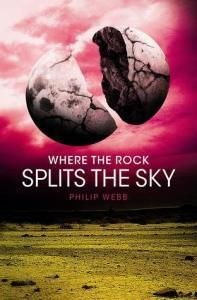
Chicken House, March 2014.
The Zone is a tricky place. Something about the Visitors’ arrival — an arrival which split the moon in half and stopped the sun from turning, putting Megan’s wold in constant daylight — has left this part of the American West with seemingly magical properties. It can cause hallucinations. It can stir up dust storms that aren’t really dust storms. It can abduct an entire town and then return it, floating in the middle of nowhere, with only one resident to tell the tale. That resident being Kelly, a girl who has no memory of life since the Visitors’ arrival.
With their posse increased by one, Megan, Luis, and Kelly are on their own mission, using the skills Megan’s father taught her, to navigate the zone in order to find him. And, if her instincts are correct, she might be able to find something — or someone — else as well. She might be able to make the world right again. Whatever that means.
WHERE THE ROCK SPLITS THE SKY is a must-read for sci fi readers looking for something completely different, and for adventure seekers who love both westerns and tough chicks. This is the kind of story that sticks with you, where the setting is as much of a character as the people, and with some seriously fascinating mythology. I can’t wait to see what’s next from Philip Webb.





May 2, 2014
Cover Reveal for my chapbook A JAB OF DEEP URGENCY!
I’m so excited to share the cover for my next book (and first chapbook!) with you! I actually got to have a hand in choosing the artist for this cover (which is super unusual!), and I loved working with her! She took my ideas and made something that was both in line with what I was thinking of and completely different and way better. Jodie Wynne, who illustrated and hand-lettered the cover for A JAB OF DEEP URGENCY, is a genius. And I can’t wait to see her illustrations on tons of book covers to come.
So, without further waffling, here’s the cover:
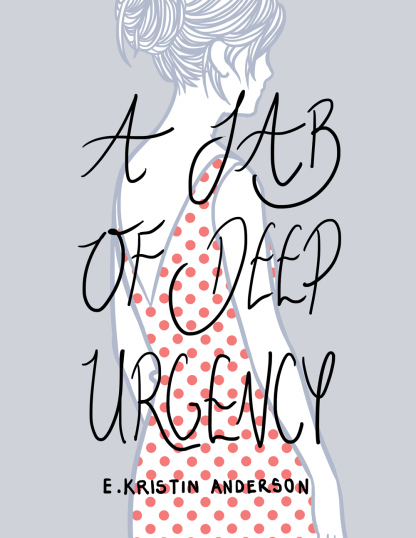
Finishing Line Press, 2014.
So! What do you think? Are you as excited as me about this book coming out? (The correct answer is YES!)
Here are some cool things other poets have said about A JAB OF DEEP URGENCY:
Found poetry is a deceivingly challenging practice; working within a constrained vocabulary, poets must remake the text anew. In A Jab of Deep Urgency, Anderson carefully erases pieces of Egan’s text, leaving behind a dynamic, personal narrative made all the more remarkable because of the myriad voices represented in the original text. The poems, each remarkable in their own right, cohere into a perceptive commentary on the relationships people have with each other and the environments in which they live.
– Jenni B. Baker, editor-in-chief of The Found Poetry Review
Kristin Anderson took a post-modern literary endeavor and turned it into an experience that pops with rhythmic, elegant staccato. She’s like a glass comber on a beach, coming up with gem after gem, revisiting a masterpiece and making it her own, even down to the last line: “See, it’s mine.”
– Kirsten Smith, author of Trinkets and screenwriter of 10 Things I Hate About You.
“See, it’s mine” is a line from one of E. Kristen Anderson’s delicious found poems. Her source text is a Jennifer Egan novel and Ms. Anderson has made from those splendid pages something uniquely hers and equally satisfying. Did I mention I love this collection? I do.
– Ron Koertge, award-winning novelist and author of The Ogre’s Wife and Lies, Knives, and Girls in Red Dresses
I’m kind of freaking about these and other generous blurbs, which will be revealed closer to the release. OMG! Sending out this manuscript was a risk, and it has turned out to be a risk worth taking.
And, I’m so psyched, because…..EDUCATORS! I’ll be working with a teacher pal to create a reading guide for this and my other chapbook, A GUIDE FOR THE PRACTICAL ABDUCTEE. If you have any thoughts on what might be helpful in a reading/teaching guide for poetry, please don’t be shy — leave a comment!
Watch this space for more info on release dates and pre-ordering info as it becomes available. I can’t wait to share this chapbook with you! In the mean time you can add A JAB OF DEEP URGENCY on LibraryThing and Goodreads! (You can add A GUIDE FOR THE PRACTICAL ABDUCTEE, too!)






